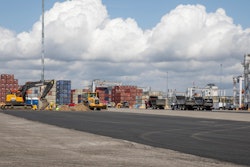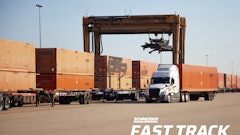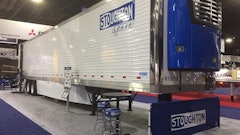
According to the Association of American Railroads (AAR), the last couple of years have been challenging ones for the railroad freight industry. Annual gross freight volumes have experienced continued weakness in supporting a total industry bounce-back following the pandemic.
This year, even though carload growth continues to be suppressed, especially by the downturn in coal production, the overall numbers for 2024 are showing promise in turning that declining trend around. The rail industry’s first quarter numbers have trended positive so far this year for combined freight traffic.
As we start to see signs of freight recovery, the industry needs to evolve its thinking, from defensive management strategies that got us through the pandemic, to those that make rail companies ready to accommodate the next cycle of growth and capture market share from other modes of freight transportation.
Industry leaders are encouraged to take a new perspective to evolve beyond the “business as usual” strategy of raising rates and cutting expenses. As traffic trends start to grow again, the rail industry needs to embrace new management initiatives to keep this industry competitive, especially in the areas of service, value and leadership.
Here are 8 key ways to spur growth and profitability in the rail sector.
1. Embrace those segments that are trending upwards.
According to the AAR, intermodal, chemicals, automotive, petroleum and other segments are growing while others may not be as emergent. Instead of cutting costs and raising prices across the board, railroad management should revise strategies in order to put resources behind the growing segments while pursuing efficiencies in areas that are diminishing.
2. Find ways to increase customer flexibility.
As customers strive to reduce their costs, there are real opportunities in the rail freight industry to capture market share from other transportation options by demonstrating the value we offer. Improving rail flexibility in both pricing and accessibility will help make rail more attractive to customers.
3. Enhance the customer experience.
Post-pandemic, railroads need to appreciate their position operating in a competitive environment with other freight providers, such that they offer a superior customer experience. Management should adopt new perspectives that focus on creating a competitive advantage because the opportunity is right for rail freight to capture market share and grow.
4. Invest in people and training.
In order to grow and service customers properly, the rail industry will need more people working in it. Already, the rail industry offers some of the highest salaries and most competitive benefits programs around. This industry needs to communicate its advantages and pursue more aggressive messaging in the employment market to have enough trained people to be able to provide the highest degree of service. In addition, the rail industry needs to invest in education and training to provide the safest and highest quality customer experience.
5. Invest in technology to help drive efficiency and lower costs.
Although the rail industry has traditionally been slow in adapting technology such as artificial intelligence (AI) and robotics, adoption is growing. The time is now to invest in technology because of its positive effect on creating efficiencies in reducing expenses by helping railroads more efficiently manage loading, switching, maintaining, planning operations and more.
6. Become more customer-centric, especially in making access to rail shipping more convenient for customers.
To grow business in this competitive environment, it will be increasingly important for rail to be more competitive in catering to customers’ needs. One way to accomplish this is to make rail more convenient to customers, which can include bringing freight customers closer to onboarding and finding ways to make onboarding more accessible to more freight customers.
7. Increase reliability and promote the superiority rail freight shipping offers.
Compared to other modes of freight transportation, railroads have an impressive record for reliability. In today’s uncertain world, superior reliability can be a valuable advantage worthy of tracking, improving and promoting as a competitive advantage over other modes of shipping.
8. Promote sustainability advantages.
Numerous studies have shown that freight by rail is the cleanest, most sustainable form of shipping. As sustainability continues to be a top priority for many Fortune 1000 companies, their appreciation of this advantage will be valuable in selecting rail shipping to help them achieve sustainability goals more efficiently.
Succeeding in a post-pandemic world requires shifting the management paradigm from one of defense to one of growth to create evolution in the industry. The companies that best prepare for the next growth cycle will be in the best position to capitalize on it.



















